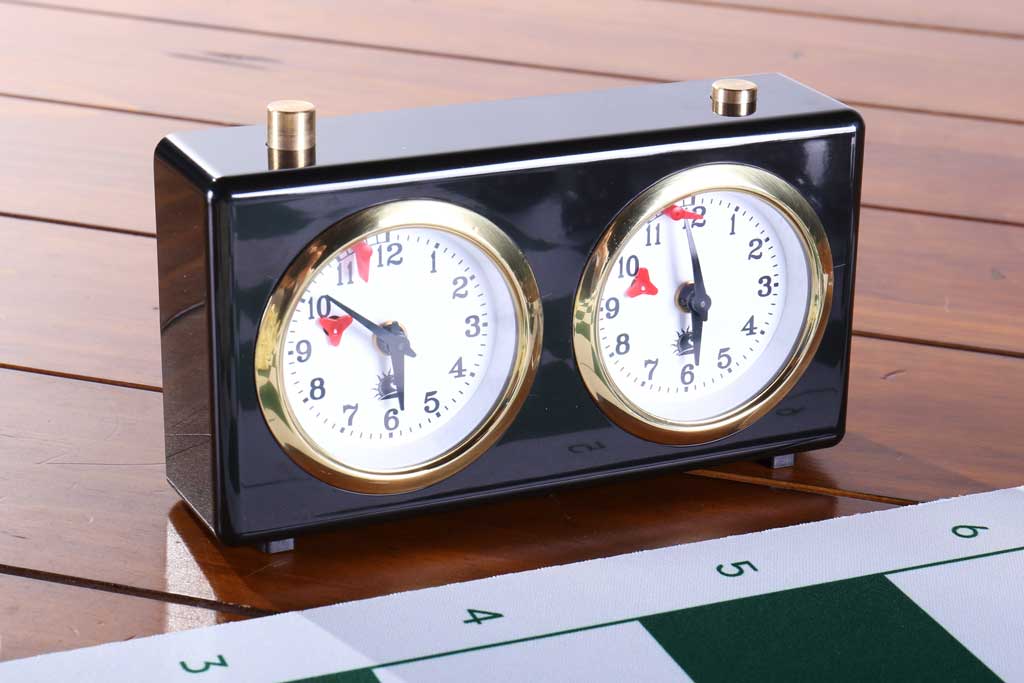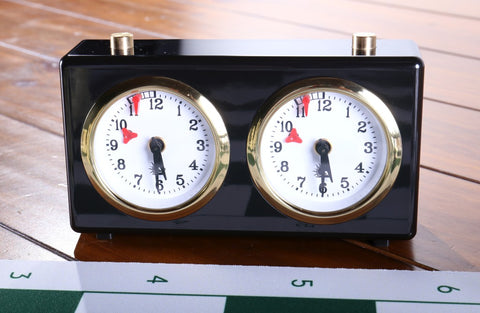How to Start a Game of Chess With a Timer
Starting a timed chess game adds a thrilling element of strategy and urgency. As you prepare to begin, ensure both players are familiar with the clock's operation.
The game starts with the traditional handshake, followed by the Black player pressing the play button to activate the clock. White then makes the first move and presses their side's button, setting the pace for a dynamic, time-managed match where every second counts.
This sequence is as follows:
- The player with the White pieces will make the first move.
2. Players shake hands and Black presses the clock’s play button.
3. White pieces move and follow by pressing the near side button on the clock.
When your opponent makes a move, they will press the button on their side, which stops their timer and starts yours simultaneously. Press the button after every move; if it seems tedious at first, keep practicing.
Soon timing a chess game becomes a skill that you can perform smoothly and rapidly.
How a Game of Chess Ends With a Timer
Time management on the chessboard is fascinating and a critical aspect of the game. Effective time management can significantly influence the outcome of a match. The last 5 minutes of a game are generally the most critical, especially in matches lasting 30 minutes or longer.
During these tense moments, players must balance speed with strategic thinking. On analog clocks, a red "flag" rises as time approaches expiration. When it falls, it signals that time has expired.
The player whose time expires loses the game, and the opponent claims the win. Mastering the rules and etiquette of timed chess can enhance your competitive edge.
How to Set the Chess Timer
Both digital and analog chess clocks are readily available here at Chess House. Digital clocks are preferred for their versatility and various play modes, while many people enjoy the simplicity and classic look of analog clocks.
Digital clocks typically count down, and time expires when it reaches 0:00. They offer multiple settings and modes, but we’ll focus on the traditional analog clock.
Analog clocks can be battery-powered but are often spring-tensioned and need occasional winding. Avoid over-winding to prevent malfunction.
Analog clocks count up with a dial and hands. A small red flag signals expired time when it falls as the minute hand reaches 12 o'clock. In competitions, a fallen flag usually means the player loses.
To set an analog clock, use the knobs on the back. For a one-hour game ("Game in 30" or 30 minutes per side), set each side to 5:30. This setting ensures a complete time of 6 o'clock, allowing observers to gauge remaining time easily.










